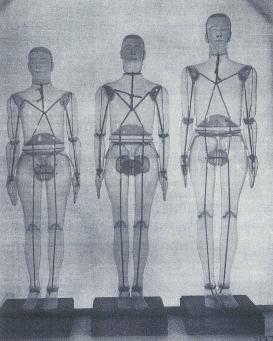What does it take to create an archive of human forms and their interactions with machinery? How does the human body come into being as an engineering object through this archiving practice? As more people have filled the position of a machine operator in vehicles, factories, and offices in both military and civilian sectors, especially since the mid-twentieth century, the human body has been shaped into a dimensional entity to be measured, classified, and managed before being put in front of a machine. This project on the history of engineering anthropometry from WWII to the present examined how this sub-discipline within human factors engineering or ergonomics has developed instruments and techniques of measuring human body dimensions specifically for close contact with machines and equipment.
In the early 1940s, Harvard anthropologist Earnest Hooton and his students conducted anthropometric surveys on the US Army Air Forces pilots, which led to a huge archive of body dimensions related to the dimensions of equipment, controls, and the space of the cockpit. As body data from Air Force surveys turned into manikins, busts, type heads, and cockpit designs, the person situated in the machine environment became the “functional man,” whose body had to be configured for the optimal operation of the machine.
More recently, the US Air Force and NATO have extended measurement projects to civilian populations, cooperating with the Society of Automotive Engineers and with the sponsorship of many corporations interested in body sizes such as Nissan Motor Co., Levi Strauss & Co., and Herman Miller. Now available as 3-D anthropometric databases in CD-ROM and print, the results of these surveys offer full-body scan images to be analyzed and utilized for product design, garment sizing, job analysis, and recruiting. As exemplified by the aptly named WEAR (World Engineering Anthropometry Resource), the postwar engineering anthropometry has served the strategic and commercial need of maximum accommodation of machine operators at an international level.

